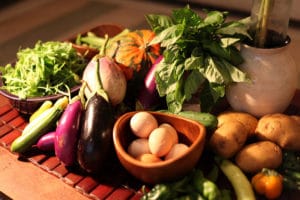Cornucopia’s Take: CSAs build a relationship between the customer and the farmer. Money for the season is paid up front to reduce risk for small farmers, and customers enjoy a progression of fresh food. Aggregators, or middlemen, buy food from farmers all over the world and present it as a CSA, but there is no community support in it.
When Community-Supported Agriculture Is Not What It Seems
The New York Times
by Julia Moskin
 |
Last Tuesday, a farm-to-table subscription service called Local Roots NYC dropped off boxes at pickup spots in New York City including a cafe, a brew pub and the offices of BuzzFeed.
Alongside locally grown rainbow chard, romaine lettuce and beets, some members got bottles of olive oil from Italy or bars of chocolate and bags of dried pasta, both Brooklyn-made. From Rustic Roots, an organic-food delivery service in the tristate area, members could receive fruit boxes stacked with oranges, pineapples and avocados.
Although both companies use the term “C.S.A.,” community-supported agriculture, to describe their service, the presence of a middleman between the farmer and the customer is precisely what traditional C.S.A.s are designed to avoid. And since olives and oranges do not grow in this region, those products provide no direct income to local farmers, precisely the people the C.S.A. was invented to benefit.

